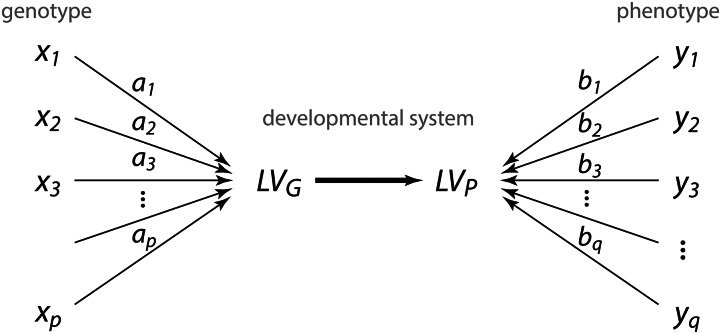Figure 1.
Path diagram illustrating the principle of multivariate genotype–phenotype mapping. For p loci and q phenotypes the genotype–phenotype map acts via a genetic latent variable ()—a joint effect of multiple loci—on a phenotypic latent variable (), which is a combination of multiple measured phenotypic variables. The effects of the loci on the phenotype are denoted by the coefficients and the composition of the phenotypic latent variable is denoted by the coefficients These latent variables and their differential effects are properties of the genetic-developmental system of the studied organisms. Multivariate genotype–phenotype mapping seeks latent variables with a maximal genotype–phenotype association in the given sample (thick arrow).

